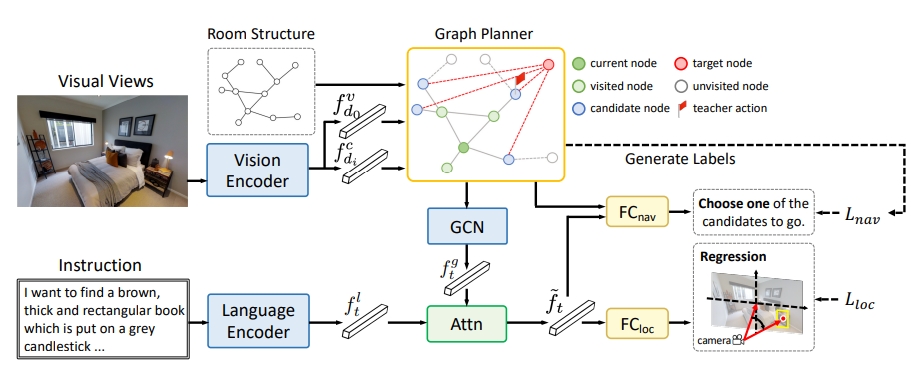Abstract
The ability to navigate like a human towards a language-guided target from anywhere in a 3D embodied environment is one of the 'holy grail' goals of intelligent robots. Most visual navigation benchmarks, however, focus on navigating toward a target from a fixed starting point, guided by an elaborate set of instructions that depicts step-by-step. This approach deviates from real-world problems in which human-only describes what the object and its surrounding look like and asks the robot to start navigation from anywhere. Accordingly, in this paper, we introduce a Scenario Oriented Object Navigation (SOON) task. In this task, an agent is required to navigate from an arbitrary position in a 3D embodied environment to localize a target following a scene description. To give a promising direction to solve this task, we propose a novel graph-based exploration (GBE) method, which models the navigation state as a graph and introduces a novel graph-based exploration approach to learn knowledge from the graph and stabilize training by learning sub-optimal trajectories. We also propose a new large-scale benchmark named From Anywhere to Object (FAO) dataset. To avoid target ambiguity, the descriptions in FAO provide rich semantic scene information includes: object attribute, object relationship, region description, and nearby region description. Our experiments reveal that the proposed GBE outperforms various state-of-the-arts on both FAO and R2R datasets. And the ablation studies on FAO validates the quality of the dataset.
Framework
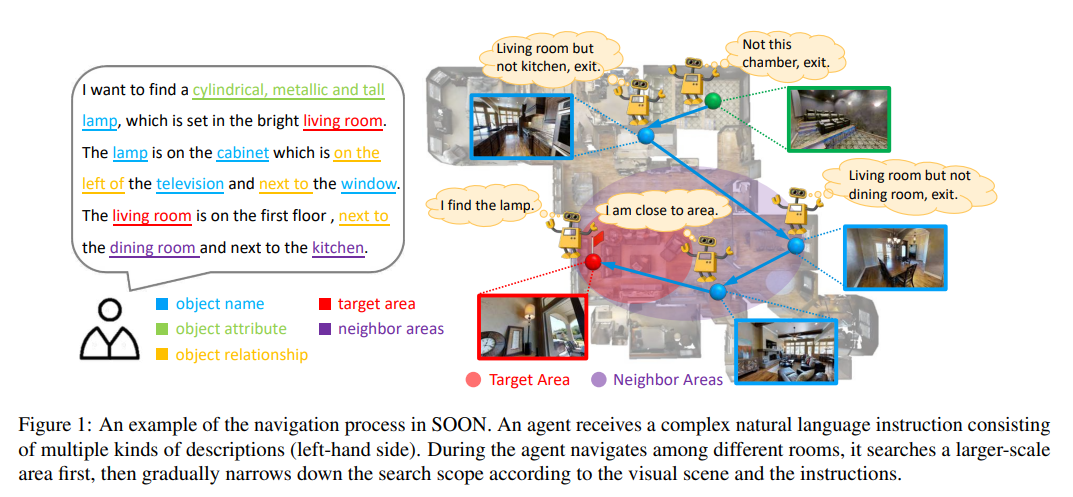

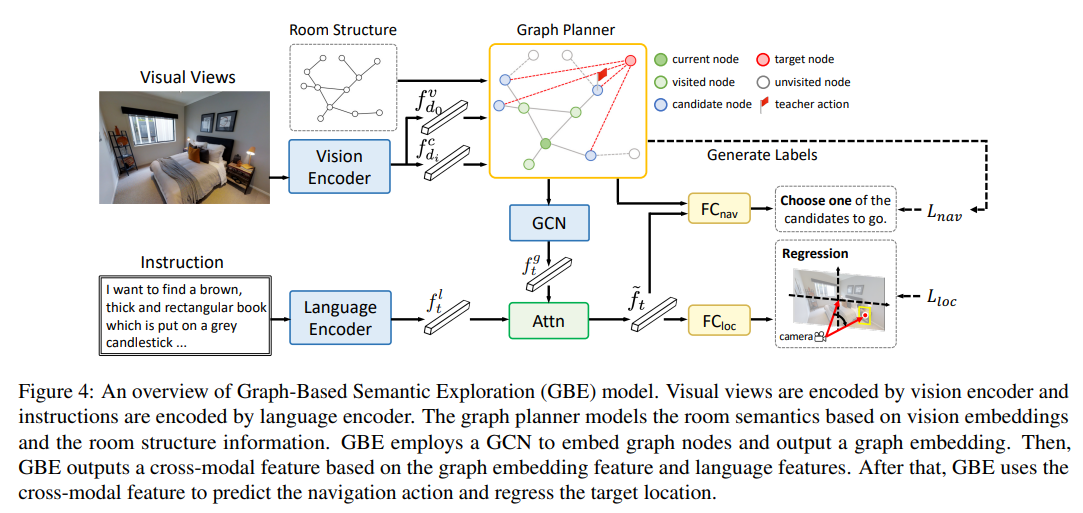
Experiment
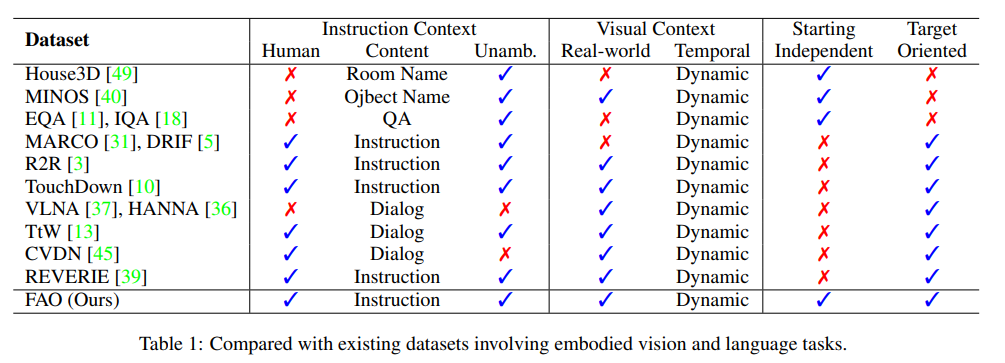

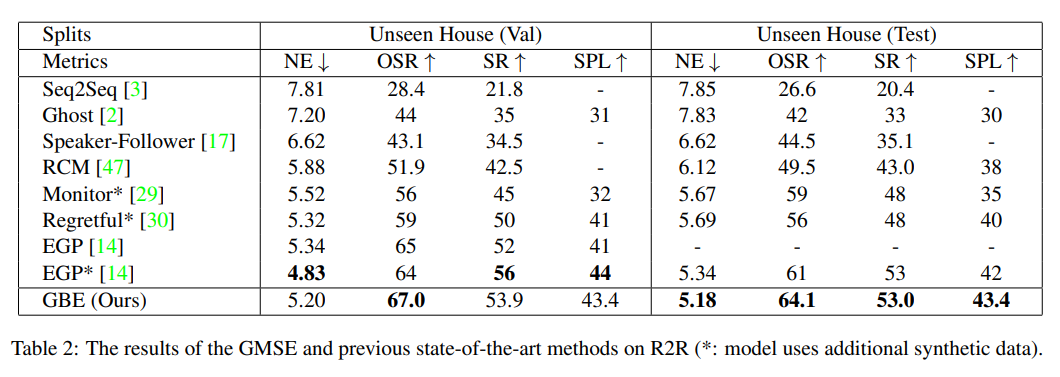
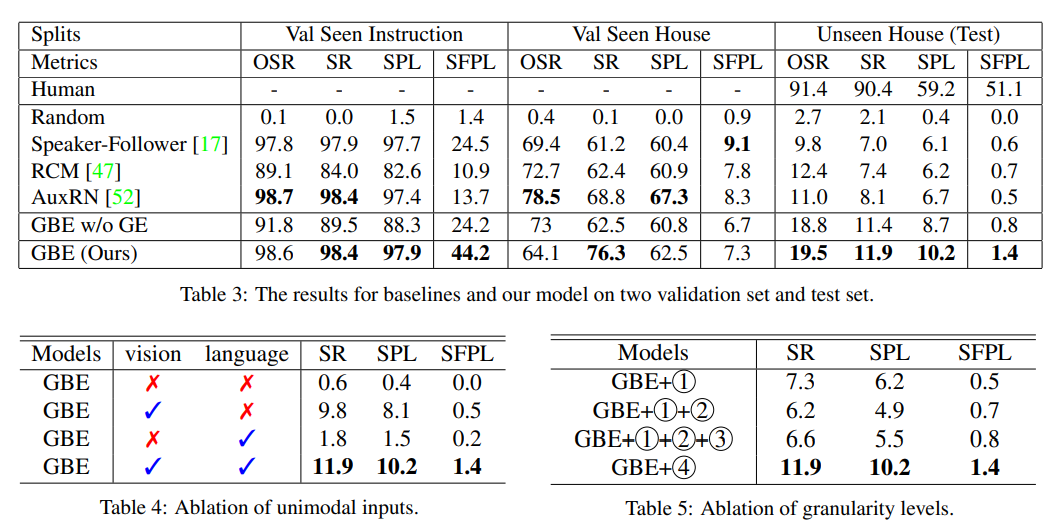
Conclusion
In this paper, we have proposed a task named Scenario Oriented Object Navigation (SOON), in which an agent is instructed to find an object in a house from an arbitrary starting position. To accompany this, we have constructed a dataset named From Anywhere to Object (FAO) with 3K descriptive natural language instructions. To suggest a promising direction for approaching this task, we propose GBE, a model that explicitly models the explored areas as a feature graph, and introduces graph-based exploration approach to obtain a robust policy. Our model outperforms all previous state-ofthe-art models on R2R and FAO datasets. We hope that the SOON task could help the community approach real-world navigation problems.
Acknowledgement
This work was supported in part by National Key R&D Program of China under Grant No. 2020AAA0109700, Natural Science Foundation of China (NSFC) under Grant No.U19A2073, No.61976233 and No.61906109, Guangdong Province Basic and Applied Basic Research (Regional Joint Fund-Key) Grant No.2019B1515120039, Shenzhen Outstanding Youth Research Project (Project No. RCYX20200714114642083) Shenzhen Basic Research Project (Project No. JCYJ20190807154211365), Zhijiang Lab’s Open Fund (No. 2020AA3AB14) and CSIG Young Fellow Support Fund. And by the Australian Research Council Discovery Early Career Researcher Award (DE190100626).

